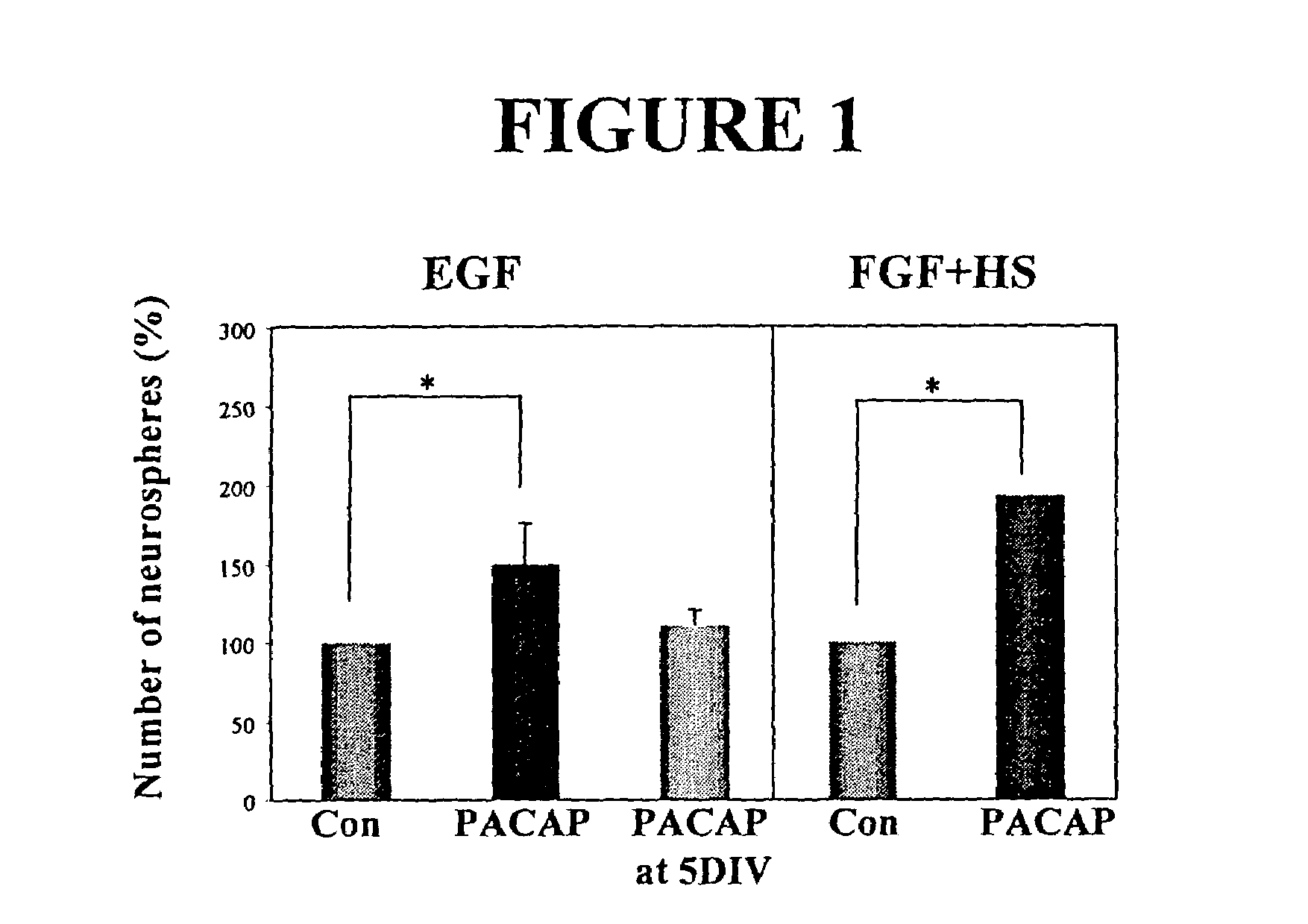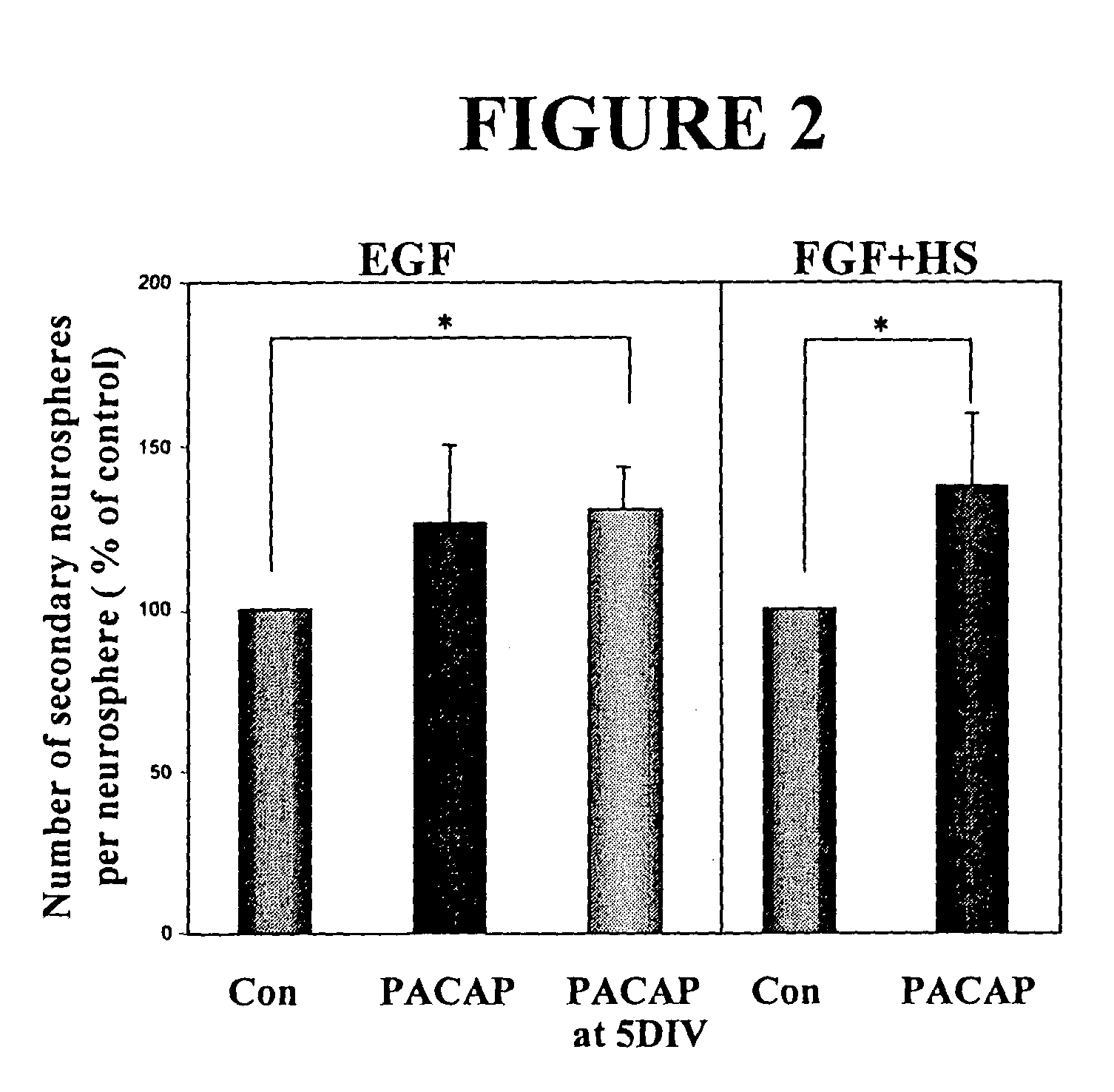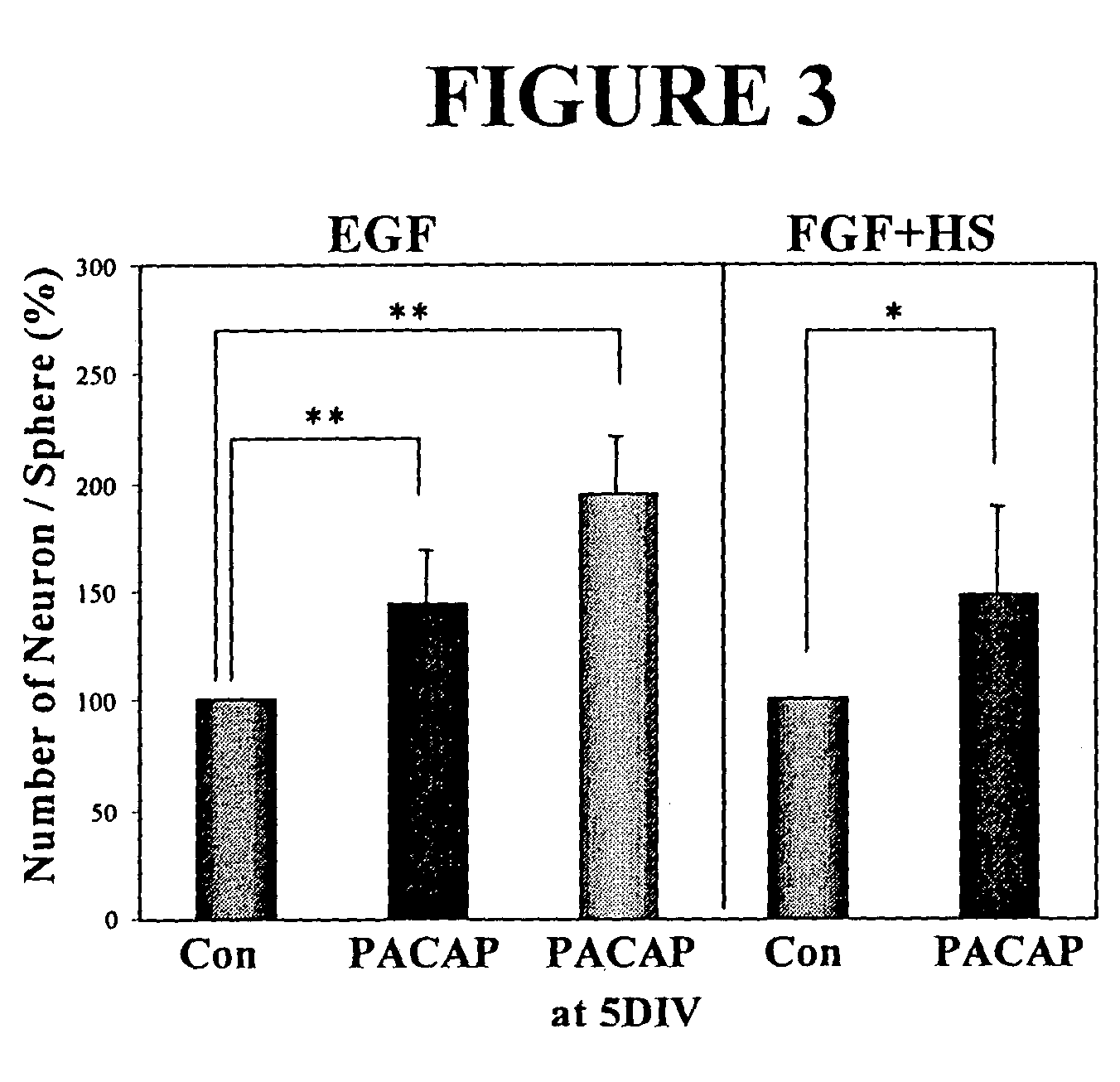Method of enhancing neural stem cell proliferation, differentiation, and survival using pituitary adenylate cyclase activating polypeptide (PACAP)
a technology of adenylate cyclase and adenylate cyclase, which is applied in the field of enhancing neural stem cell proliferation, differentiation, survival, and survival using pituitary adenylate cyclase activating polypeptide (pacap), can solve the problems of inability of these cells or the brain region to carry out the intended function, loss of neurons, and limited capacity of the mature nervous system to produce new neurons. , to achiev
- Summary
- Abstract
- Description
- Claims
- Application Information
AI Technical Summary
Benefits of technology
Problems solved by technology
Method used
Image
Examples
examples
PACAP Regulates Neural Stem Cell Fate in Vitro and in Vivo
[0109]PACAP Receptor Expression.
[0110]As the PACAP receptor (PAC1-R) is expressed in the forebrain germinal zone of the rat throughout early development, it is believed to play a role in regulating neural stem cells. Receptor expression was examined both in vitro and in vivo at various stages. Primary embryonic neural stem cells were isolated from the E14 ganglionic eminences as previously described (Reynolds and Weiss, 1992). Using Reverse-transcriptase PCR (RT-PCR) analysis, PACAP and PAC1-R were found to be expressed in the embryonic day 14 murine ganglionic eminence (E14 GE). PAC1-R was also expressed in E14 EGF-generated neurospheres, further indicating a role in neural stem cell regulation.
[0111]The expression of PAC1-R was confirmed by Western blot analysis using ECL Plus (Amersham Biosciences). Anti-PAC1-R (1:1000) was obtained as a gift from Dr. Arimura. Western blots demonstrated that PAC1-R receptor protein express...
PUM
| Property | Measurement | Unit |
|---|---|---|
| density | aaaaa | aaaaa |
| flexibility | aaaaa | aaaaa |
| area | aaaaa | aaaaa |
Abstract
Description
Claims
Application Information
 Login to View More
Login to View More - R&D
- Intellectual Property
- Life Sciences
- Materials
- Tech Scout
- Unparalleled Data Quality
- Higher Quality Content
- 60% Fewer Hallucinations
Browse by: Latest US Patents, China's latest patents, Technical Efficacy Thesaurus, Application Domain, Technology Topic, Popular Technical Reports.
© 2025 PatSnap. All rights reserved.Legal|Privacy policy|Modern Slavery Act Transparency Statement|Sitemap|About US| Contact US: help@patsnap.com



